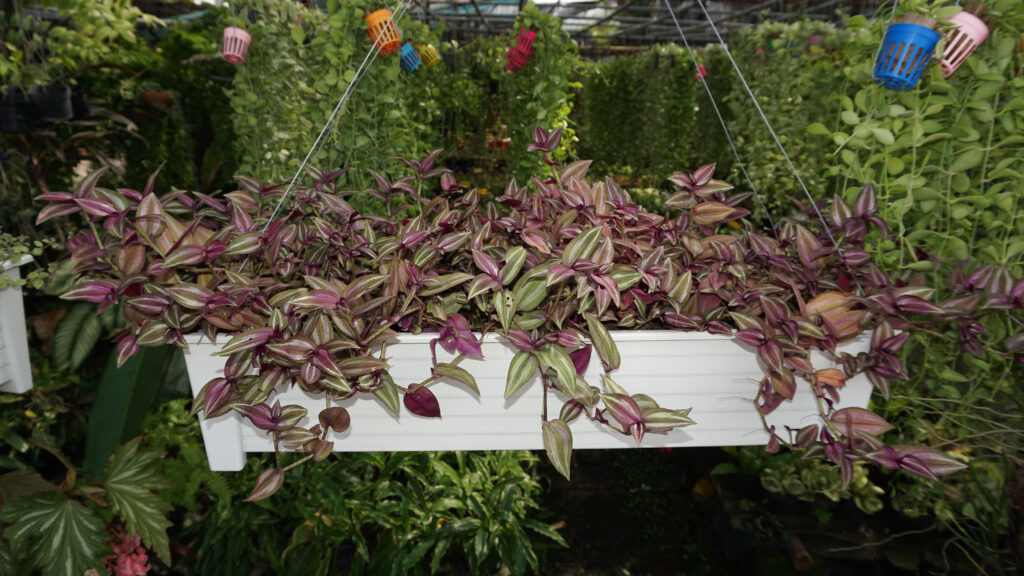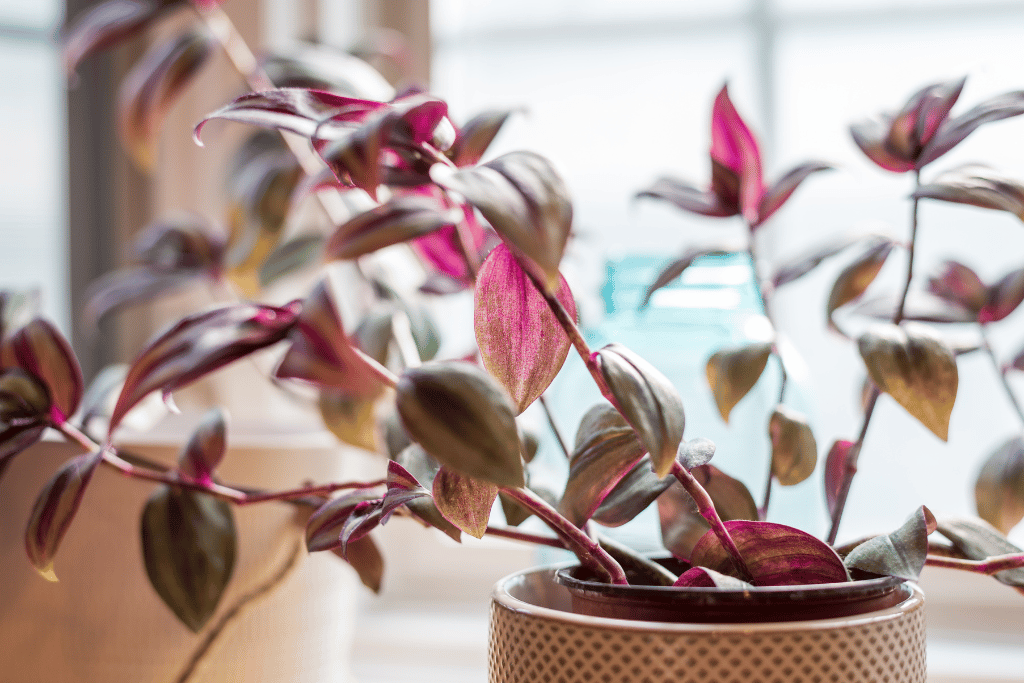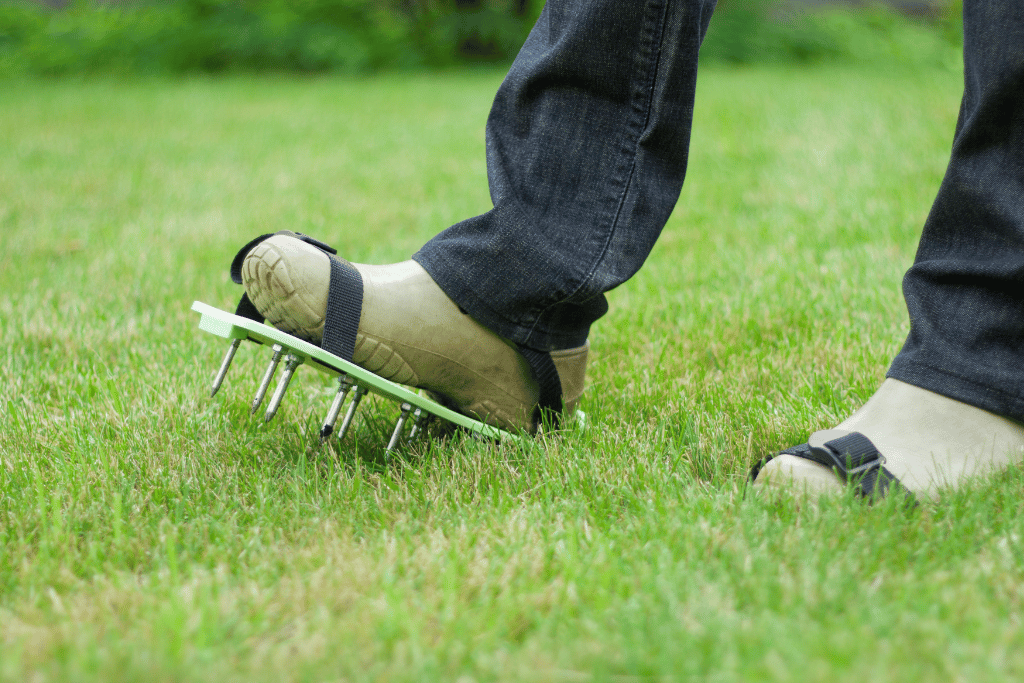
Do you have a wandering jew growing upwards suddenly after having been problem-free for a long time? Don’t worry – you’re not alone in this mystery BUT you’re at the right place to find out what happened.
Below we discuss the ins and outs of the most common issues regarding this special plant and provide you with useful tips on bringing the most out of your leafy friend. Say goodbye to legginess and spindly stems, and hello to a fuller, healthier plant. Let’s get growing!
How To Make Wandering Jew Bushy

Appropriate lighting and watering conditions
A bushier wandering jew starts with proper watering and lighting. These two factors play a crucial role in the plant’s health and growth. Make sure your plant is placed in a sunny location with indirect light and water it regularly, keeping the soil moist but not waterlogged.
This will help the plant to grow strong and healthy and to produce new growth that will contribute to a bushier appearance. Remember, wandering jew plants are native to tropical environments and prefer high humidity levels, so misting the leaves regularly can also help. Additionally, be mindful of the temperature, as this green is squeamish to drafty or excessively hot or cold areas.
Pinch pruning at suitable times
Many people ask how to make wandering jew bushy while being completely unaware of the pinch pruning technique. However, this method can make or break the success of growing this outstanding plant healthy.
Essentially, it’s about pinching back the tips of the plant to encourage a fuller look. The best time to do this is during the growing season, typically spring and summer. Pinching back the tips of the plant not only promotes bushier growth but it also prevents legginess. You can pinch back anywhere from 1/4 to 1/2 inch of the tips, depending on the desired length of the plant. Remember to always trim above a node, which is the point where leaves grow from the stem.
Proper fertilization
Regular fertilization is a significant element of promoting healthy development and keeping your purplish friend looking their best. Choose a balanced fertilizer and apply it every 4-6 weeks during the growing season, following the manufacturer’s instructions. This will help ensure that your plant has all the nutrients it needs to grow strong and produce new shoots.
Re-potting
When your green has outgrown its current container, it’s time to re-pot it into a larger one. The appropriate pot or hanging baskets provides more room for the plant’s roots to spread out, which is another great answer to how to make wandering jew bushy. Just make sure to choose a container that’s only slightly larger than the existing one, as an overly huge pot may lead to waterlogged soil and root rot.
No over-pruning
It’s crucial to avoid excessive pruning if you wish to have a bushy wandering jew. While pinch pruning is a great way to foster growth, overdoing it might result in the exact opposite effect. Removing too many leaves from the plant reduces its overall volume, which ultimately makes it only slimmer. So, be mindful of how much you’re cutting away and remember to only pinch back the tips of the plant, not entire branches.
What Makes Wandering Jew Leggy

Insufficient light
Wandering jews love a good, humid spot in the house or apartment with plenty of natural light. Therefore, if you cut it away from the proper light source, chances are it will become leggy sooner rather than later, trying to stretch towards the spot hit by the most amount of light. Therefore, make sure your plant is placed in a location with enough indirect light coming in, and rotate it every few weeks to prevent it from becoming spindly.
Improper watering
Over-watering or under-watering can both cause legginess in wandering jew. Keep in mind to water your plant regularly, sustaining proper moisture of the soil without flooding it.
Overly small pot
As we’ve already mentioned above, the size of your container matters significantly towards the health of your pot-dweller. If your plant’s roots are cramped in a small space, it may become leggy as it is desperately trying to stretch for more space. So, consider re-potting it into a larger container to prevent this unpleasant scenario.
Irregular temperatures
Temperature fluctuations are also a vital factor that makes wandering jew leggy. The plant rather prefers warm, humid environments as opposed to cold and dry ones. Plus, it’s also sensitive to excessively hot or cold areas.
Clogged container
It goes without saying that a blocked pot hinders the development of any greens. Wandering jew is not exempt from this. So, it’s important to place it in the right container with appropriate drainage that prevents water from pooling around the roots and causing legginess.
How To Pinch Wandering Jew Step-by-Step

Trimming is a simple and effective method how to make wandering jew bushy and aesthetically pleasing. Here are some best practices to follow, along with a step-by-step guide on how to manage pruning efficiently:
- Timing: The best time to pinch prune your plant is typically during spring and summer. This is when it is actively growing and will respond best to old tips being cut away.
- Tools: Make sure you have a clean, sharp pair of scissors or pruning shears on hand. Dull or dirty tools can damage the plant and bring about a variety of diseases, so it’s important to use equipment in good condition.
- Locate the tips: Look for the ends of your wandering jew that you want to pinch back. These are the new growth tips that have emerged from the stem.
- Cut them away: Using your tools, gently trim the tips of the plant above a node. Remember, you are free to pinch back anywhere from 1/4 to 1/2 inch, depending on the perfect length you imagined for your plant.
- Repeat: Redo this process every 4 to 6 weeks during spring or summer to advance a fuller growth capability and avoid making wandering jew leggy.
- Be patient: It may take a few weeks for new shoots to appear after pinch pruning your wandering jew. Try not to be impatient – instead, keep caring for your plant as usual, keeping in mind the above caring suggestions.
- Enjoy the results: With regular pinch pruning, you should start to see new growth appearing along with a bushier appearance.
Final Words
Seeing your wandering jew growing upwards is a frustrating phenomenon indeed. However, by following our tips and best practices, maintaining a healthy and lush plant is within your reach! Our comprehensive guide was designed to provide you with tips that make you able to face any issues that may arise and enjoy the results of your efforts in the form of a thriving and beautiful wandering jew.
We hope you managed to identify what made your wandering jew leggy. With the newly acquired knowledge, you’ll be able to bring out the best in your leafy friend from now on. With patience and persistence, a stunning environment with a flourishing plant will be your well-deserved reward.
Frequently Asked Questions (FAQ)
Why is my wandering jew growing upwards?
If your plant is stretching towards the sky, it could be because you have relocated its pot to a spot where the sun reaches all sides of its leaves. Allow it some time to adjust, and once it begins to grow again, consider rotating it every now and then to prevent one side from receiving more sun exposure than the other.
Why does my wandering jew have yellow and brown leaves?
Discoloration can happen for several reasons, including over-watering, insufficient light, disease, pests, and old age. Giving the plant too much to drink leads to rotting roots sooner or later, causing the leaves to turn yellow or brown. Your leafy friend also requires sunlight to thrive, and if it is not receiving enough of it, the leaves display the first warning signs. Moreover, certain diseases and pests, such as fungal infections, viruses, spider mites, or thrips, might damage the leaves. As the plant grows, its older leaves may naturally turn yellow or brown and eventually fall off. It is important to address any discolorations promptly and provide the wandering jew with proper care to promote healthy growth.
Why is it advised to remove yellow and brown leaves from the plant?
Getting rid of unhealthy leaves boost growth and prevents the spread of any potential diseases. It also contributes to maintaining an attractive appearance and aiding a plumper look. It’s important to note that yellow or brown leaves are a natural part of a plant’s life cycle, and some shedding is normal, but if you notice an excessive amount of them, it may be a sign that the plant is in need of extra attention.
What kind of fertilizer should I use for my wandering jew?
A balanced, all-purpose, water-soluble, 10-10-10 or 20-20-20 fertilizer is an excellent choice. Fertilization should occur sometime in spring to fall and can be reduced or stopped during the winter months when the plant is dormant. Over-fertilization can lead to fertilizer burn and cause leaf discoloration, among other problems. However, when done properly, fertilizers feed the plant with all the essential nutrients it needs for a healthy life.
What kind of potting soil does the wandering jew need to thrive?
This charming green prefers well-draining soil that is rich in organic matter. The optimal potting mix would consist of a blend of peat moss, perlite, and vermiculite. This type of soil allows for adequate moisture retention while also providing appropriate drainage to circumvent the development of root rot. In general, the wandering jew doesn’t mind a slightly acidic pH level, around 5.5 to 6.5. You can adjust the pH by adding lime or sulfur, as needed, to achieve the optimal range for your plant.
Is wandering jew toxic to pets?
It is considered to be mildly poisonous to pets, including cats and dogs. If ingested, it may cause gastrointestinal irritation, including vomiting and diarrhea. Therefore, it’s crucial to keep the plant out of reach of pets and to supervise them around the wandering jew to ensure their safety. If you suspect that your pet has consumed any part of this green, immediate veterinary attention is required. To be safe, it’s always best to keep potentially toxic plants out of reach of both pets and children.



